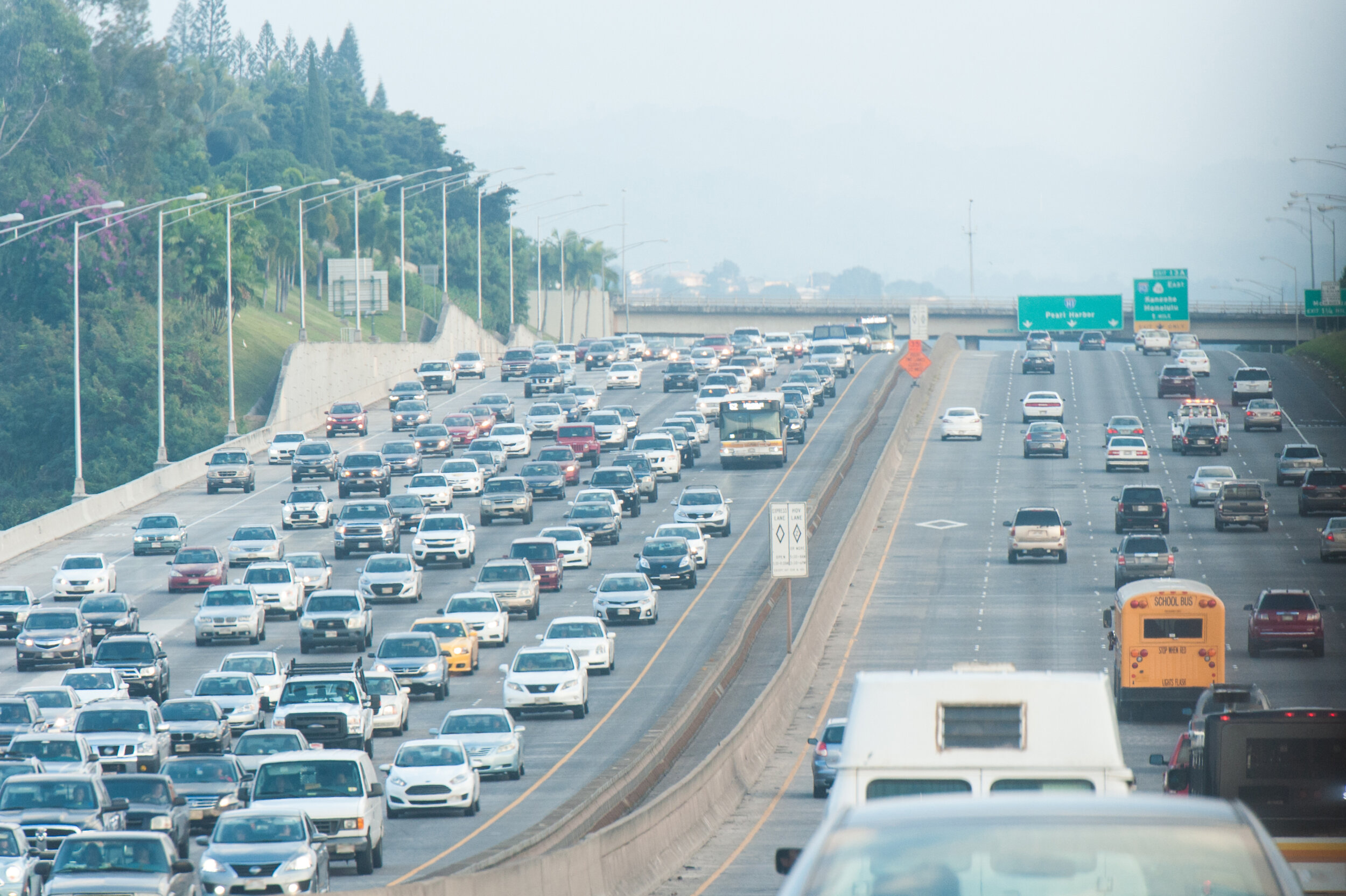
Transportation
Our cars, trucks and on-road vehicles are big climate polluters. Providing more clean transportation options can transition Oʻahu from expensive imported oil, and improve the quality of life for residents.
The City is investing in clean transportation options such as TheBus, Skyline, electric vehicles, and infrastructure to promote safe biking and walking.
Key Projects
Greening the City Fleet
Honolulu is converting the City’s fleet to 100% renewable energy by 2035 and will transition the City's vehicle and bus fleet to electric as required by Ordinance 20-47. Since fall of 2020, the Resilience Office has been working with key City departments and ICF to develop a plan for converting all City vehicles to electric vehicles by 2035. The Department of Transportation Services now has 17 electric bus in service and has installed bus charging equipment to kick start TheBus transition to 100% electric.
Supporting Electric Vehicles Island-wide
Ground transportation accounts for about one fifth of O‘ahu’s greenhouse gas emissions, 90% of which comes from personal cars and light-duty trucks. Getting around in a safe, pollution-free manner is an important component of reducing climate change and improving overall quality of life. While not the only solution, the transition to electric vehicles (EVs) is an important step in achieving carbon neutrality by 2045.
American Cities Climate Challenge
To support short-term City actions to provide more clean and affordable transportation options, the City participated in the two-year climate action accelerator program, the Bloomberg Philanthropies American Cities Climate Challenge. The City received in-kind technical assistance from more than 10 local and national partners to help support the City's development of carbon-free transportation options alongside rail launch, including a bus-only lane, increased biking and walking infrastructure, smart fare payment options for transit (HOLO card), and reform of parking policies.
Bill 2
Bill 2 (2020) offers a critical update to Honolulu’s decades-old parking and land use regulations to streamline and right-size parking requirements for new homes and businesses, maximize affordability and choice for residents, and support clean transportation options. Implementing Action 8 of the Oʻahu Resilience Strategy, Bill 2 (2020) aims to create more affordable homes and businesses, tackle climate change, and make our streets safer while still preserving parking for those who need it.

Based on O‘ahu’s first Greenhouse Gas Inventory, on-road transportation is one of the largest greenhouse gas emission sources on the island, second only to building emissions. By decarbonizing O‘ahu’s transportation sector, the City continues to meet its overall climate change commitments.
Goals for Clean & Affordable Transportation
Transition the City & County of Honolulu’s fleet to 100% renewable energy by 2035
Convert the community to 100% renewable ground transportation by 2045
Reduce the overall number of vehicle miles traveled
Increase dedicated bike lane miles by 40% by 2021




